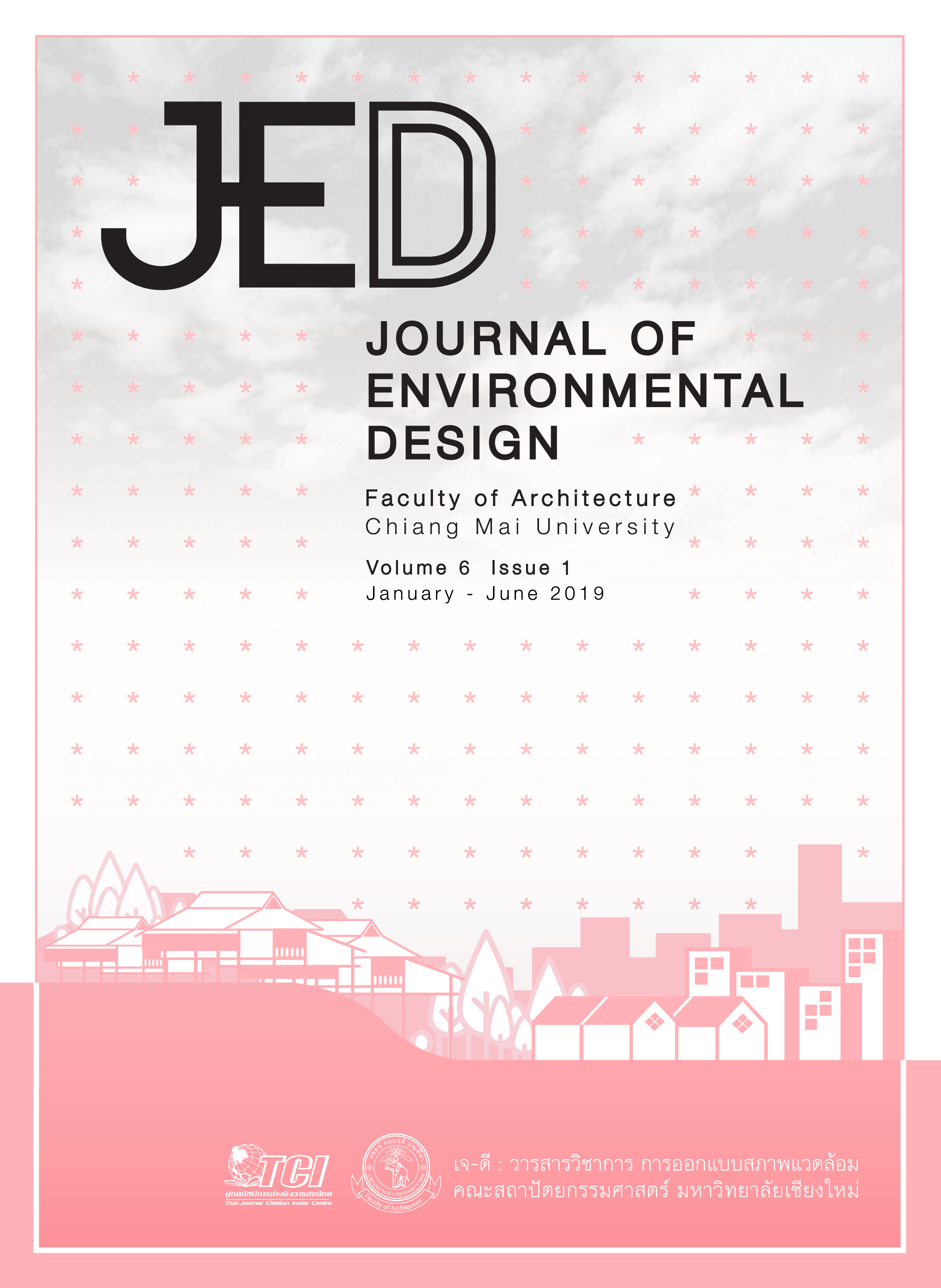residential real estate development process through participation: case study of Co-housing project and Baan Mankong project
Keywords:
development process, real estate, residential, participatory, Baan MankongAbstract
Residential is one of the largest sectors that has highest value in Thailand’s real estate market. When the market reached saturated predicament, real estate companies developed new projects trying to capture new market segmentation. In contrary, some real estate development types mainly focus on a production returns (mass product) rather than encouraging a sense of community to residents. In fact, cultural foundation of Thai
community are community-based culture and community social area. Apart from the real estate projects developed by the Thai Government, a number of developers tried to create the sense of community in housing projects through extensive participatory process. This article aims to study the participatory process in real estate development project comparing between government and private developers to examine lessons learned in applying
participation into the residential real estate development process in the future. The research was conducted on two case studies, which are co-housing project (Bandiaokan 2 project) and Baan Mankong project (Rung Manee Pattana Community).
References
Chaipanyalert, C. (2009). Karn pattana khrongkarn teeyu-asai co-housing nai prathed Thai koranee sueksa khrongkarn Ten Bangkok. (In Thai) [The development of co-housing project in Thailand: a case study of the Ten Bangkok project] (Master’s thesis). Bangkok: Chulalongkorn University.
Hamdi, N. (1996). Educating for real: the training of professionals for development practice. London: Intermediate technology publications.
Harpool, J. (2018). Overview of the real estate development process. Retrieved August 3, 2018, from https://www.marc.org/Regional-Planning/Creating-Sustainable-Places/assets/MARCDevProcessCommittee9-21-12.aspx
Klinchuancheun, P. (2017). Naewnom thurakit utsahakam thurakit teeyu-asai nai Krungthep lae parimonthon (In Thai) [Business and industrial trend of housing market in Bangkok and suburb]. Retrieved August 5, 2018, from https://www.krungsri.com/bank/getmedia/4dda41fa-1db0-4b97-bca2-591cc99537d2/IO_Housing_181115_TH_EX.aspx
Meltzer, G. (2005). Sustainable community: learning from the cohousing model. Bloomington, Indiana: Trafford Publishing.
Miles, E. M., Netherton, M. L. & Schmitz, A. (2015). Real estate development - 5th edition: principles and process. United States: Urban Land Institute.
Panusittikorn, P. (2012). Karn pattana teeyu-asai bab co-housing: koranee sueksa khrongkarn Bandiao kan. (In Thai) [co-housing development: a case study of Bandiaokan project] (Master’s thesis). Bangkok: Chulalongkorn University.
Patcharasurabordee, P. (2002). Karn borihan chatkarn sue khosana thurakit asangharimsub. (In Thai) [Management of media for real estate business] (Master’s thesis). Pathum Thani: Thammasat University.
Prasittichok, K. (2011). Neawtang karn oakbab yang mee suanruam khong tee phak asai samrab nak sueksa nai sathabankarnsueksa suan phumiphak: koranee sueksa mahawitthayalai Mahidon witthayakhet Nakhonsawan. (In Thai) [A guideline for participatory design of accommodation and community planning for regional university students: a case study of Mahidol University, Nakhon-Sawan campus] (Master’s thesis). Pathum Thani: Thammasat University.
Rapeepat, A. (1982). Karn mee suanruam khong chumchon nai boribot nai sangkhom lae wattanatham Thai. (In Thai) [Participation of rural communities in Thai social and cultural conditions]. Bangkok: Sak So Pah Press.
Sahatsathamrungsri, S. (2009, September 6). Thurakit asangharimsub (In Thai) [Real estate business]. Prachachatthurakit Newspaper. P.23.
The Cohousing Association of the United States. (2018). Co-Housing Characteristic. Retrieved August 2, 2018, from https://www.slideserve.com/pascal/newer-housing-options-for-older-adults
Wasi, P. (1997). Saksi haeng kwam pen khon sakkayaphab haeng kwam sangsan. (In Thai) [The dignity of man the potential of creativity]. Bangkok: Mo-chao-Ban Publishing House.




